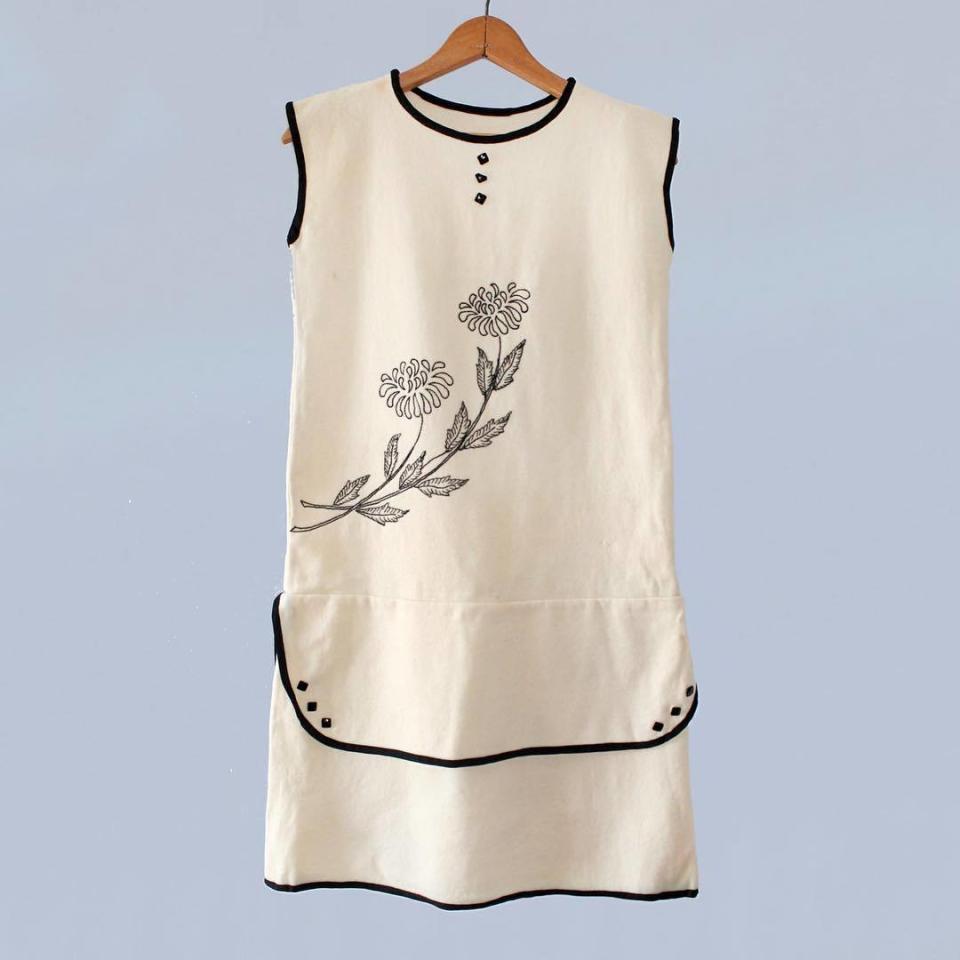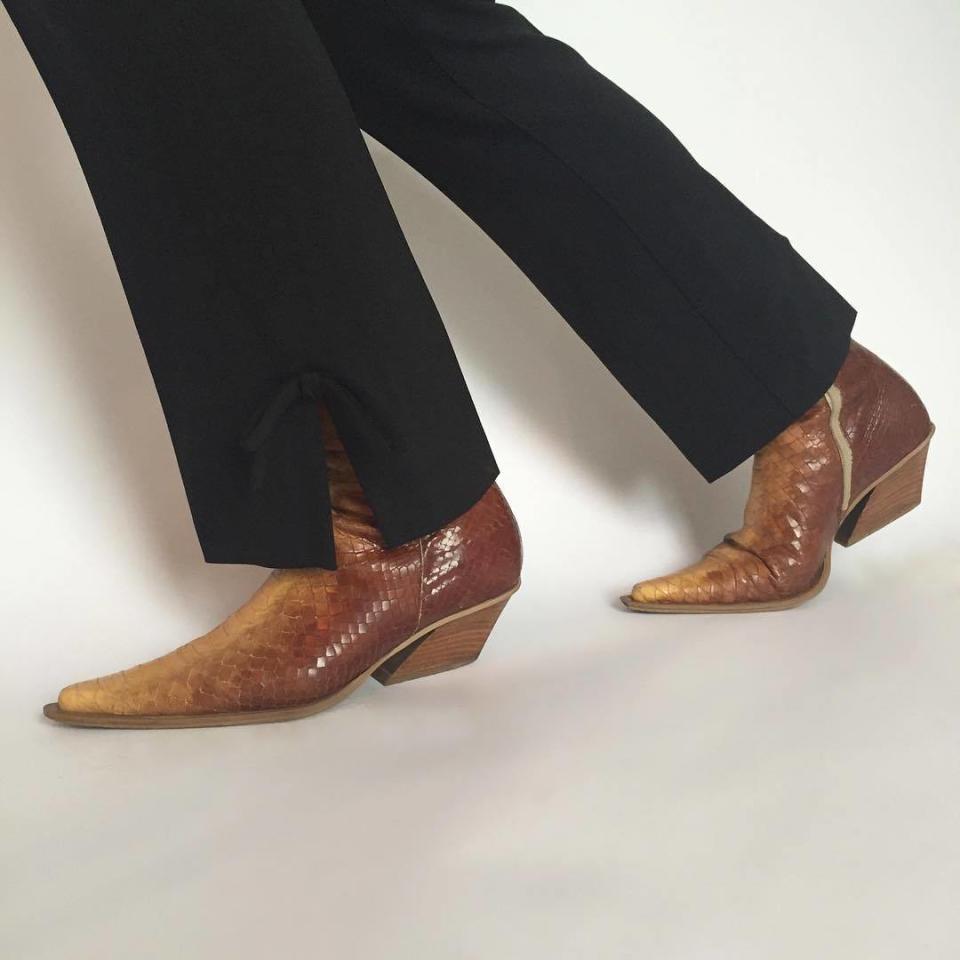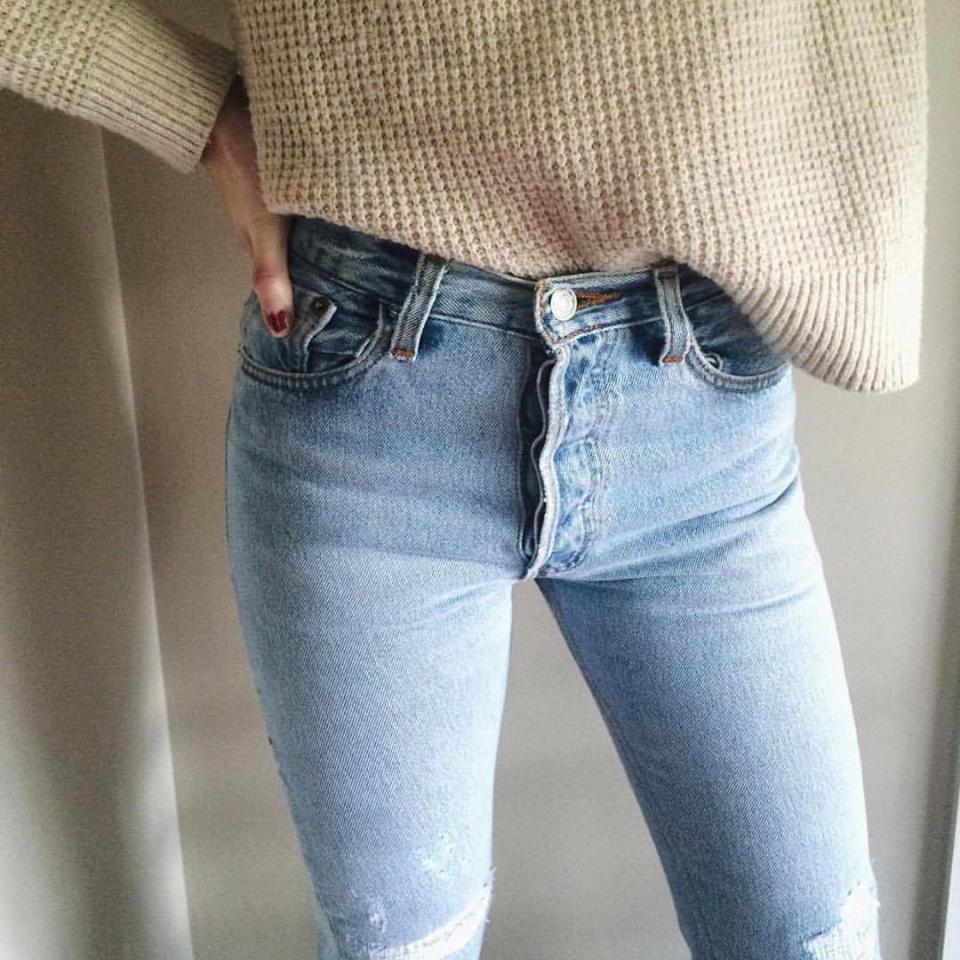The Smart Girl’s Guide to Shopping Vintage Like a Pro

Photo: Instagram/@vacationsf4sale
It’s Vintage Week at Yahoo Style! In honor of our favorite environmentally friendly way to make sure you’re never wearing the same outfit as anyone else, we’re bringing you insider intel on the best vintage — what to look for, where to find it, and how to make the most money when selling yours. Stay tuned all week for more.
If you’re a fiend for fabulous ’80s fashion, but your name isn’t Lourdes Leon … or if you thirst after ’70s style, but your mama ain’t Cher, then you’ve got just one viable option: shopping vintage.
There are endless perks to buying vintage clothing: It’s typically more cost-effective than shopping for new pieces, it’s better for the environment, and your wardrobe is guaranteed to be unique — meaning you’ll never have to worry about showing up someplace wearing the same Zara slip dress as your frenemy. Plus, for those of us who get off on the thrill of the hunt, searching for and finding the ultimate vintage score can be mind-blowingly exciting.
That said, vintage shopping isn’t something that any old lover of all things retro should attempt blindly. We’ve laid out eight rules for successfully snagging vintage finds that’ll make any amateur look like a pro.
Know the difference between vintage, thrift, and consignment
First things first: A vintage store is not the same as a thrift store, nor does it count as consignment. Sure, they’re all filled with older, preowned clothing — but in vintage shops, the garments for sale have already been curated for you by the shop owner, who purchased them herself from a variety of potential sources (like estate sales or, yes, true thrift stores). Thrift stores like Salvation Army, Goodwill, or Volunteers of America, on the other hand, are typically charity-run and feature donated clothing — the resale of which profits the charity. And consignment stores offer clothes that have been sold back by their previous owners. So, while you can still find amazing vintage items at thrift or consignment shops, you’ll have to be patient and dig a lot deeper. Whereas at a vintage shop, a lot of the dirty work has already been done for you — and the higher prices reflect that.
Forget what you know about sizes
If you’ve ever been involved in an argument conversation about what size Marilyn Monroe wore, then this should come as no surprise: Women’s clothing sizes have changed over the years. And because the practice of so-called “vanity sizing” wasn’t in full swing until the mid-1980s, the sizes you’ll find on the labels in a vintage store will likely be a lot higher than those you’re used to seeing on modern clothing. For instance, a dress from the ’50s may claim to be a size 16, but it’s actually a current-day size 8. Kind of a big difference, eh?
It’s also not uncommon for vintage pieces to have been tailored and brought in over the years by their previous owner(s) — also rendering the size on the tag fairly useless. The moral? When in doubt, try it on.

Photo: Instagram/@guermantes.vintage
No fitting rooms? No problem
But what about when there isn’t a fitting room — or if you’d just rather not deal with the line? The obvious answer is to go shopping in something minuscule and body-conscious — think leggings and a tank top — so that you can try stuff on over it inside the store without being escorted out for indecent exposure. But if leggings aren’t your bag, there are some other will-it-fit tricks to try.
If you’re looking at pants or skirts that are meant to be worn at the natural waist (and most vintage styles will be), button or zip up the garment all the way, then wrap the waist around your neck, bringing the two sides together in the front. If you end up practically choking yourself while trying to meet the edges, then odds are that the item will be too small for you. But if there’s about an inch or so of overlap — and you can still breathe normally — then there’s a very good chance the pants or skirt will fit you to a T. Why does it work? Because for most people, waist circumference is twice that of the neck. Trust us: This really works!
Another option is to wear a skirt and pull a pair of pants on up under it to preserve your modesty — or, you can always bring along a good old-fashioned tape measure.
See now, buy now
If you’re used to buying new clothes, chances are that you’re also familiar with the mental dance of trying to decide whether that top or those shoes are worth the money, and eventually choosing to think it over for a while and possibly come back to it. But that same exercise in restraint won’t work in your favor when it comes to vintage shopping.
It might sound obvious, but vintage finds are pretty much always one-of-a-kind. Which means that, if you see something and fall in love with it, you should purchase it immediately — or there’s a good chance someone else will snatch it up while you’re back home pondering. And if you decide you didn’t actually need it? Hey, you can always resell it later on down the line.
Pay attention to tears and stains
So you’ve stumbled upon the vintage dress of your dreams. Congrats! Only thing is, it’s got some discoloration around the collar and a smattering of tiny holes near the hem. Is it worth bringing home and trying to patch it up, or should you call it a loss and walk away?
First, consider the fact that a reputable vintage store has already cleaned and presented the garment to a certain standard — which means that the way it looks now is likely as good as it’s gonna get. (You can ask the shop owner to make sure).
Water stains can go unnoticed in a dimly lit store; it’s best to hold the items up to a light or the window to reveal the telltale yellow marks and thinning fabric that could lead to easy tears. Certain marks, like brown mold stains, are just too hard to remove, period.
And before you attempt to clean your vintage pieces at home, consider the fact that clothing made before the ’80s is often too fragile to survive the washing machine, and even dry-cleaning can be too rough on more delicate items.
For those who are clothes-cleaning fanatics, the Vintage Fashion Guild has an extremely in-depth guide to washing and preserving vintage that’s intended for vintage sellers but is just as useful for buyers.

Photo: Instagram/@thebreakvintage
Think outside the women’s section
While the women’s section of a vintage store may be the most obvious place to look for some new-old clothes, don’t discount the goodies you may find in other parts as well.
The more formal dress codes of the past make the men’s section a treasure trove of spiffy topcoats, blazers, sweaters, and button-downs. And if your foot size falls on the larger end of the spectrum, you may even find a gorgeous pair of vintage leather oxfords that suit your fancy.
If you’re petite, the children’s section — both boys’ and girls’ — often hosts a wide array of appealing (and less pricey) styles like cropped pants, schoolgirl skirts, and baby-doll dresses.
And don’t forget about accessories: Vintage shops are typically lush with costume jewelry, bags, and hats that are guaranteed to make any fast-fashion-dominated outfit more interesting and fabulous.
Keep it in the family
The best things in life are free — and that includes vintage shopping. If your mother or grandmother had any semblance of style or a sense of nostalgia, then there’s a good chance she held on to at least some clothing or accessories from her past. If you ask nicely, she may let you rummage through her attic or basement for those dresses she’s been saving forever or the blouse she wore on her first date with your grandfather. It can even be a fun opportunity for you to bond with one another and make each wearing feel that much more meaningful. Oh — and it won’t cost a dime.
If your own family’s selection of vintage clothing is lacking, don’t discount yard and estate sales — especially in neighborhoods where seniors live — as an alternate option for discovering other grandparents’ vintage items … even if they aren’t exactly your grandparents.

Photo: Instagram/@shopredone
Don’t forget to check online
The clothes might be vintage, but that doesn’t mean you have to shop for them the old way. The rise of websites and online marketplaces like Etsy means that buying curated vintage pieces can now be as painless as ordering new clothing.
Wondering where to start? For full-skirted Betty Draper dresses from the ’40s and ’50s, start with When Decades Collide and Vintage Vortex. If bohemian clothes from the ’60s and ’70s are your jam, check out Dig Vintage Clothing and Von Vixen Vintage. Try The Beard and Lady for a great selection of vintage T-shirts, along with Winston Vintage and Aiseirigh for some generally awesome, less-categorizable retro goodness. Looking to find the perfect-fitting vintage jeans? We made a guide for that. There’s even an entire online shop dedicated to awesome vintage maternity wear — the Vintage Maternity Co.
Instagram is currently having a vintage moment too, with plenty of stores utilizing the photo-sharing app to allow followers to purchase or bid on specific highlighted pieces. Try @Guermantes.Vintage for ’20s and ’30s vintage, @VacationSF4Sale and @ShopWorship for awesome ’80s finds, @FriendsNYC and @TheBreakVintage for ’90s throwbacks, and @NaNinVintage for ultra-trendy vintage clothes and accessories that’d drive any Reformation fan crazy with desire.
Follow us on Instagram, Facebook, and Pinterest for nonstop inspiration delivered fresh to your feed every day.

